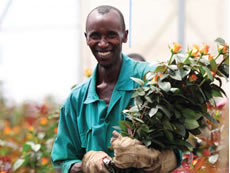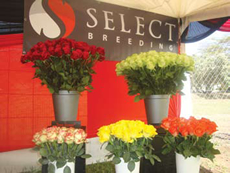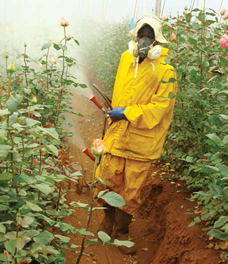Featured Past Articles
Dr. Christy van Beek, senior soil scientist at SoilCares, shares her expertise on soil fertility and fertiliser recommendations in a series of blogs.She now shares her view on the applicability of sensor-based technologies for developing fertiliser recommendations in this new blog.
The soil mystery
Soil data is used to develop fertiliser recommendations as it reflects the stock of nutrients in the soil that the crop can extract. Conventional laboratory procedures can only measure nutrient concentrations in a solution. One of the most critical aspects in conventional soil laboratories is the choice of the most relevant extraction method. Notably, parts of the nutrients are readily available (i.e. already in solution). Other parts are sorbed to the soil complex and can become available after desorption.
To some extent, crops can stimulate the desorption of nutrients from the soil complex. Hence, the ‘trick’ of conventional laboratories is to use an extraction method that indicates the availability of nutrients in the soil for crop uptake at several time scales. And here starts the fussiness.
 Online sales is gaining ground very rapidly and that’s going to cause a real shock to the current floricultural sector, which has been around for quite some time.
Online sales is gaining ground very rapidly and that’s going to cause a real shock to the current floricultural sector, which has been around for quite some time.
The Dutch floricultural industry is going to see some big changes. And when it comes to adapting to the changing market demand, growers shouldn’t hold back, but go full speed ahead. It’s the only way the role of for example Royal FloraHolland can be preserved, stated Rabobank, the largest financial service company in the Dutch horticultural industry, in a recent study. “All entrepreneurs, from small to large, have to take their responsibility.”
Rabobank is optimistic with regards to the opportunities lying ahead for the Dutch floricultural industry. In their study about the future of the sector, the cooperative bank forecasts a 2% growth per year for consumer spending on plants and flowers. The Dutch floricultural industry can benefit from this growth. But only if entrepreneurs throughout the entire chain, including breeders, growers and exporters, act now. “The organisation of the chain and the companies within it are going to experience some major changes”, says Arne Bac, horticultural sector specialist at Rabobank. Bac conducted the study together with colleague Lambert van Horen, analyst with Rabobank’s Fresh Produce sector team.
 Many farmers grow cut flowers for export in Kenya. Proper harvesting and care of flowers after harvest are important to maximize the vase life and ensure a high quality product.
Many farmers grow cut flowers for export in Kenya. Proper harvesting and care of flowers after harvest are important to maximize the vase life and ensure a high quality product.
Maximizing the vase life of cut flowers is dependent on pre-harvest procedures too. Long before harvest, variety selection should be considered for postharvest longevity to provide the best possible varieties. The weather conditions and plant environment also affects the postharvest longevity.
Flower Maturity Stage to Harvest
It is important to know the optimum stage of harvesting for each variety to ensure the quality of flowers after harvest. For maximum vase life of cut flowers, harvest flowers daily at their proper stage of development. Harvesting too early or too late significantly reduces the vase life of the flowers. If harvested after the optimum stage, the developing flowers use the carbohydrates that will be used for the development of smaller flower buds, thus, slowing down the growth of other flowers.
Be it the Valentine’s Day, Mother’s Day or any special occasion, flowers are undoubtedly one of the most traded produce globally. Quintessential to any celebration, flowers are of great importance and are integral to the human society. The cut flower industry, therefore, has been flourishing rapidly and widely, mainly on the back of air freight industry that has been instrumental in providing quick and efficient transportation to over 95 percent of the exported cut flowers. As an efficient support system, the air cargo industry ensures they have more than enough capacity to handle the constant flow of the delicate cargo as eighty to ninety percent of purchases are shipped within 24 hours.
 When I first visited Select Breeding at their new show case at Naivasha, it was on invitation by Michael de Geus; the Managing Director, Select breeding. This was on 25th to 27th of January when the company held their first showhouse at Oserian two lakes to display their commercial varieties available in the market and other new varieties.
When I first visited Select Breeding at their new show case at Naivasha, it was on invitation by Michael de Geus; the Managing Director, Select breeding. This was on 25th to 27th of January when the company held their first showhouse at Oserian two lakes to display their commercial varieties available in the market and other new varieties.
I met a team honoured to satisfy the curiosity of their customers who kept on tripling every minute courting for their attention. By count I could not tell the number of times they walked in to the new show case with a different customer then back to the reception area for either continual discussion with the same client or for a fresh discussion with a new client. On a close follow up, I realized that inside the show case was more technical and less commercial whereas in the reception was more commercial and less technical. These men had a wide knowledge of the two worlds of rose breeding. In between the customers, I stole some few minutes and managed to get a few minutes of interview with several of them. “Select breeding tests their latest cultivars and showcases their commercial varieties which are already planted for display”, says Mr. Michael The event was a kickstart for the year, moving forward growers, rose’s buyers and other stakeholders in the industry are highly welcomed to visit the showhouse at Oserian two lakes company during working hours to explore commercial varieties and new varieties in select breeding’s showhouse.
Read more: Plan a Date with Select Breeding’s Show House at Oserian Two Lakes
 Agriculture in the whirlpool of large and niche market
Agriculture in the whirlpool of large and niche market
The Agriculture Industry, which is the backbone of our economy, is facing multiple threats from the growth of fake pesticides. According to a latest study conducted, the fake pesticides industry in India was estimated at billions of US dollars globaly, which account for 25 per cent by value and 30 per cent by volume of the domestic pesticides industry . The Study indicates that this market is expected to grow at the rate of 20 per cent per annum in terms of value, and if not addressed, can reach to approximately 40 per cent share by value in the pesticides industry by 2019. The problem is extreme in many countries including Kenya. Consequences of Counterfeit pesticides: The Contribution of agriculture sector in the GDP is already declining. This trend is worrying and will create a natural stretch on the agriculture sector in the future.The growth of spurious is adding fuel to the fire as Kenya has suffered a loss of tons of food grain production. In light of this, Kenya’s position as food sufficient country and exporter in the world is also at stake. There is no denying that the damage through such products is multi-fold and the counterfeit pesticides pose a significant threat to various stakeholders
Read more: Identify Fake Pesticides With Authenticated Solutions
Avocado is an important commercial fruit grown mainly by both small and large scale farmers. The main avocado varieties grown for export market are Hass and Fuertes. In addition, three others are traded in the local market which includes Puebla, Duke, and G6.
“Exemplary great and growing fast!!” That was the clear answer from a Kenyan grower, when I went calling to understand the avocado market. “Global avocado consumption is growing by about three percent every year; however, production growth remains a little behind. Worldwide investments in the product are on the rise but cannot match the demand. For now, the market is big enough for all players involved”, he added.
When the Investor had engaged a consultant two years ago to understand the market which led him to the bank to apply for a loan, he wasn’t sure whether he will get his money back. He had no experience as a grower, he had just been retrenched as a civil servant and wanted to try his luck. The consultant was crystal clear to him. “If you do not know how the global sector operates you cannot get far with the investment. You need to understand the seasons and the market dimensions”, he told me as we toured his expansive farm. “Worldwide, investments in avocado are on the rise. However, consumption is growing rapidly especially in North America and Europe. Europe is recording high prices due to low supply but in America, prices remain at a reasonable level while China is a major import market”, he added.


